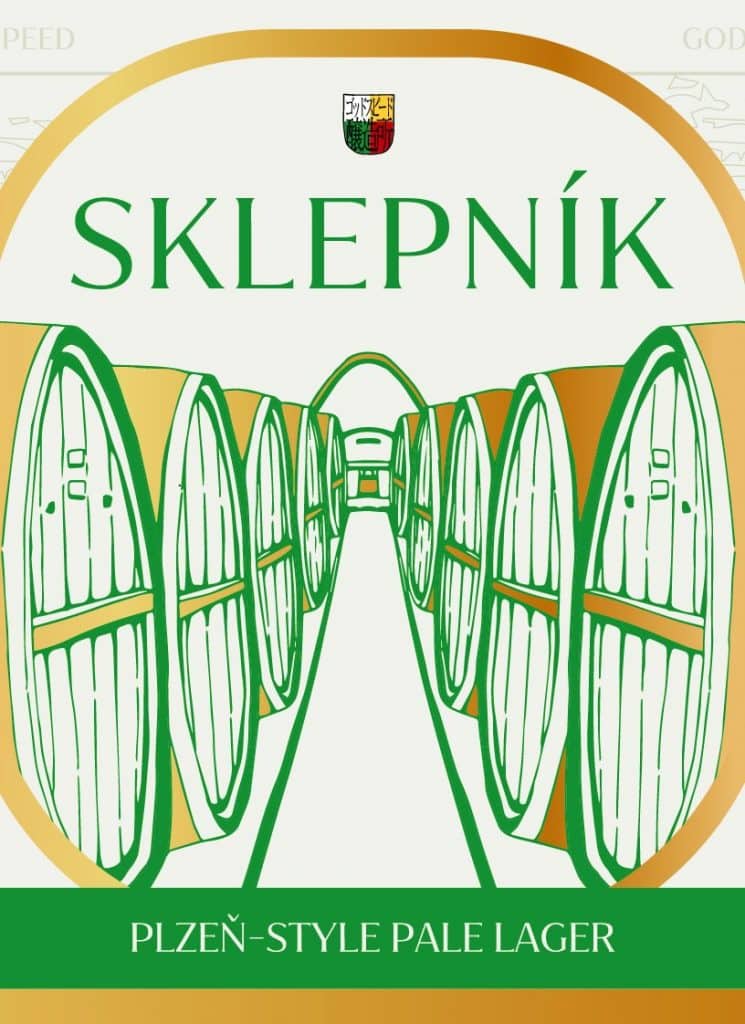 What is a Czech Pilsner?
What is a Czech Pilsner?
The origins of pilsner beer dates back to 1842, named after the ancient city of Plzen, now part of Western Czech Republic, where the beer was first brewed. Prior to the advent of pilsner, beer drinkers were only accustomed to dark, heavy, cloudy beers. This Plzen brew is renowned for being the first fully pale beer in central Europe, light-bodied, golden and brilliantly clear. According to modern standards, Czech pilsners should be more malt-forward than their German counterpart, crisp and clean, with a pronounced bitterness.
Yeast & Fermentation
By the early 19th century, brewers knew that yeast was necessary for fermentation, but did not understand its role or how to propagate it. In 1837, German scientist Theodor Schwann observed the formation of yeast spores, concluding that fermentation of starch and sugars was part of a living process, rather than a chemical reaction resulting from decomposing yeast cells. Twenty years later, Pasteur’s work reinforced Schwann’s claims, demonstrating that living yeast cells convert sugars into ethanol. Armed with their new-found knowledge of yeast, Bohemian brewers began to connect differences in style with variations in yeast properties.
History of Pilsner Urquell
In 1838, several of the Plzen’s brewers dumped 36 barrels of local beer out in the streets in the town’s square. The spectacle signified their mass rejection of spoiled beer, and sub-par beer quality, that can most likely be attributed to a lack of understanding about fermentation. Following this now historical event, local brewers decided to build a brewery, using their newfound knowledge of yeast, fermentation processes and improved malting technology to brew better beer.
Martin Stelzer was hired as the architect to build the new Plzen brewery, a cold fermentation/lager brewery. After visiting several Bavarian breweries, Stelzer chose a location on Radbuza River – a natural source of soft, nearly mineral-free water, ideal for making light, crisp beer. From this site, the builders excavated sandstone rock to make tunnels for lagering beer, a centuries-old technique used by Bavarian brewers. In addition, Stelzer incorporated an on-premise malt house, employing the new malting technology from Britain for producing pale-coloured malts.
Stelzer hired Bavarian brewer Josef Groll, as the head brewer for the new facility. Well-versed in making cold-fermented lagers, Groll used local produced pale malts, Czech Saaz hops, soft water and a bottom-fermenting yeast – allegedly smuggled out by a Bavarian monk – to make his brew. The first batch of pale lager was brewed in 1842, eventually called Pilsner Urquell, meaning “original source of pilsner.” The brewery would later take on the title Pilsner Urquell Brewery, after its namesake beer.
Pilsner Urquell Today
For a century and a half, brewers had been conditioning beer in oak and beechwood barrels pitch-lined with dark resin from coniferous trees. The fermenters were pitch-lined was to minimize wood flavours and leakage. In 1992, Pilsner Urquell traded its oak fermenters to stainless steel tanks. The brewery has continued to use the same triple decoction method for nearly a century, where a portion of mash is heated then added three times to help raise the temperature of the wort. This method was initially used to help regulate mash temperatures, though it still used today as it also adds more colour and flavour to the beer.
A confluence of factors led to the introduction of the first pale lager, the discovery of bottom-fermenting yeasts, and most notably the vast improvements in kilning technology. Although it’s difficult to get your hands on the traditionally brewed Pilsner Urquell, you should really try Godspeed Sklepnik, a beer conditioned in pitch-lined Pilsner Urquell barrels, brewed in the traditional way of the original brew.
(Leah is a Toronto based freelance writer as well as the Beer Boss and a server at C’est What)


